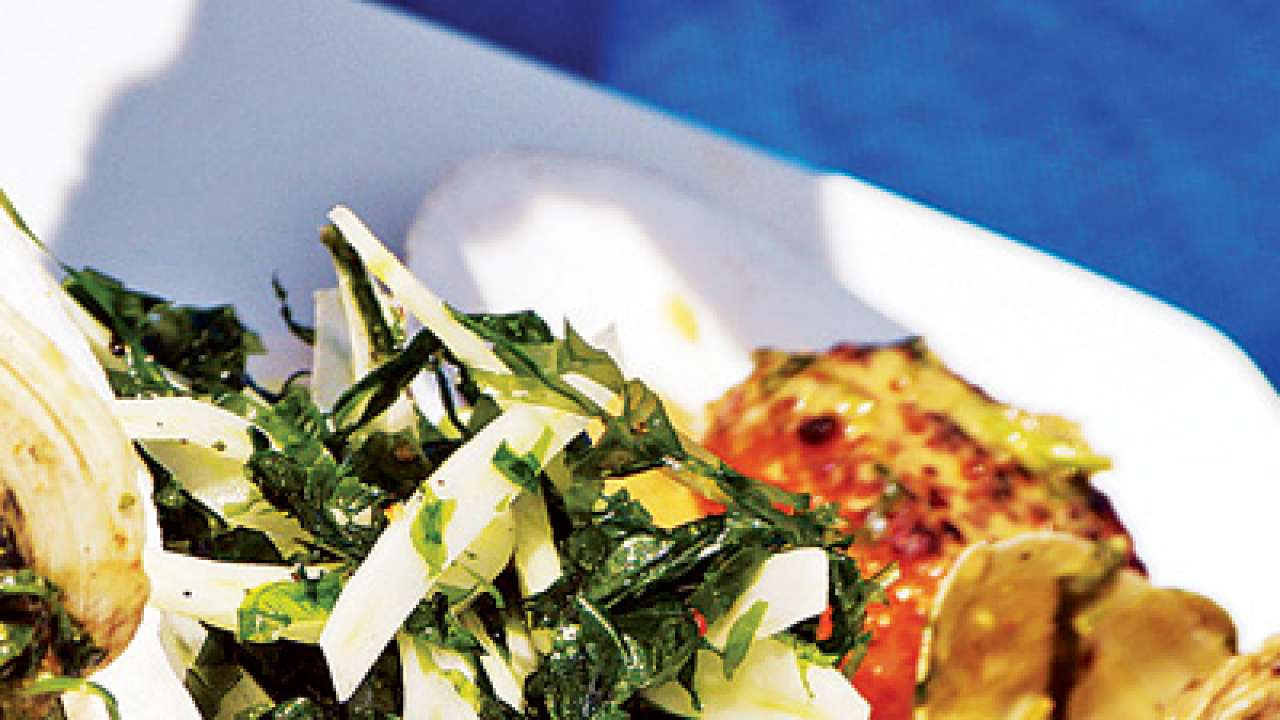
I was always fascinated by the ocean. Not just the fish, shellfish or the beach but sea vegetables and different forms of sea weed.
When I was filming my cooking show, Vicky Goes Foreign, I came across a lot of it in Nova Scotia where it is used to make chips, eaten in soups and also mixed in with salads.
For several centuries there has been traditional usage of seaweeds in cuisines from China, Japan and the Republic of Korea. As people from these countries have migrated around the world, this custom has moved with them. Thanks to that, the consumption of seaweed is not unusual across the board.
In recent years there has been a strong movement in France to introduce seaweed in the European cuisine, with some success, although it is still regarded as an exotic component of the menu. It has gained more acceptance in regions like California and Hawaii, where communities of Japanese are larger and the taste for seaweeds spreads out into the surrounding population. From restaurant menus to supermarket shelves - they are everywhere.
On the East coast of the United States of America and Canada, around Maine, New Brunswick and Nova Scotia, some companies have begun cultivating seaweeds on shore, in tanks, specifically for human consumption, and their markets are growing. Ireland and Northern Ireland are showing a renewed interest in seaweeds that were once a traditional part of the diet. Already on the market in many countries around the world are cooking books incorporating recipes using "sea vegetables". With the current trend for consumers to embrace organically grown foods and "natural" foods from clean environments, seaweeds should receive more acceptance.
We all consume sea weed in some form or the other. Nori is the greenish purple sheet which is used in wrapping sushi. Does that ring a bell? Anyone who's eaten sushi knows Nori. It's the mildest form of seaweed, generally comes roasted in sheets or squares. Compared to other sea vegetables, it's also fairly low in minerals and other nutrients, but that just means you can eat even more of it. Try wrapping up gobs of tuna salad (tossed in olive oil and balsamic vinegar, sprinkled with kelp granules, perhaps) with your Nori squares for a quick, healthy snack, or just eat them plain.
Another seaweed Kombu is used to make a stock or dashi and this fishy or kombu flavoured stock is a very important component in Japanese food especially for a good Miso Soup.
Irish Moss grown over centuries around the British isles is a purplish colour flat leaves found along the rocks softened in water it has a sea-like odour, and because of the abundant mucilage it will form a jelly when boiled, containing from 20 to 30 times its weight of water. Irish moss is a major source of Carrageenan, which is commonly used as a thickener and stabiliser in processed foods, including ice cream and luncheon meat. Folks in the Caribbean boil Irish moss until it's jelly, add flavouring like vanilla or cinnamon, and top it off with rum and milk. The concoction is supposed to fight impotence and confer aphrodisiac qualities. The Irish and Scottish boil the stuff to make a tapioca-like pudding dessert.
Sea Lettuce, (also known as Green Laver), Ulva lactuca Linnaeus, is an edible seaweed of the family Ulvaceae that is commonly found attached to rock pools around the British coast. Out of the water the seaweed looks like a rather slimy lime-green mass (above, left) but in the water the alga actually does look very much like young lettuce leaves. It can be eaten raw or can be cooked in stews and soups. They can also be made into a fritter by chopping finely, boiling for half an hour, mixing with grated cheese and oatmeal before forming into patties and frying.
Wakame is another popular one in Japan and Korea, where restaurants often serve it fresh (or reconstituted) tossed with a bit of sesame oil over a bed of lettuce. I highly recommend trying this out – the chewy robustness of the seaweed holds up well against the delicate lettuce. Wakame often appears in miso soups or simple broths, floating on the top.
Arame is brown Japanese kelp used primarily in Japan, China, and Korea, but Peruvian and Indonesian cuisine employs it as well. It has a sweet, mild flavour, making it a great sea vegetable for beginners. Try sautéing soaked, drained arame with winter squash, onions, butter, and a bit of chili pepper for a great side dish for grilled meat or fish. Soak dried arame for five minutes before using (unless it's going right into a soup).
Dulse is a red seaweed that attaches itself to rocks in the North Atlantic and Northwest Pacific oceans. It's often shredded, dried, and sprinkled on soups, but fresh dulse can be sautéed with butter and garlic, or rubbed with olive oil and salt and roasted in the oven to make chips.